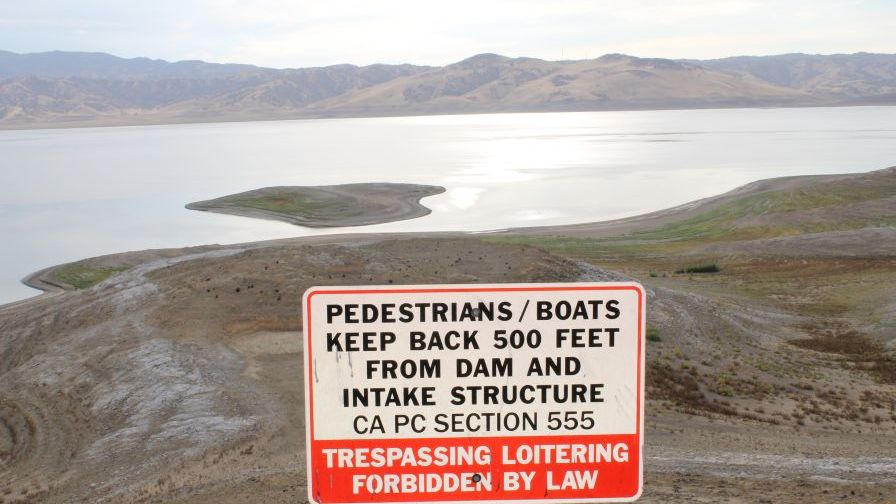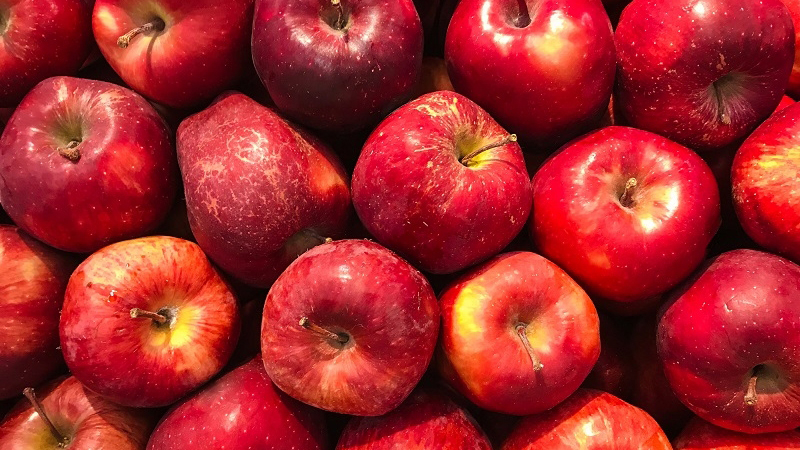How the Organic Farm Industry Is Helping Growers Deal with Climate Change

The last California drought, reflected in this image of the San Luis Reservoir in Northern California in 2015, is still fresh in the minds of Golden State growers. Organic growers and industry suppliers are keeping a close eye on climate change. (Photo by David Eddy)
As the 2021 harvest begins to wind down, those supplying organic products say the biggest issue facing organic growers is some manifestation of climate change, such as drought.
Bond McInnes, Eastern Technical Service Manager, AgBiome, says climate change is an issue that should be attacked head on.
“The impacts of the climate crisis, from extreme heat to drought to wildfires to intense rainfall and flooding, will only continue to intensify unless we choose another course for ourselves and generations to come,” he says. “Growers, in regions experiencing severe weather patterns, are looking for alternative solutions to address this impact.”
The good news for organic growers in particular is that alternative solutions are available in the microbial world, which has a virtually inexhaustible amount of biochemical diversity, and humankind has only utilized a minute part of this diversity. McInnes says data shows high-yield fields have greater microbial diversity, synthetic chemical treatment of fields can decrease such microbial diversity, and there are biological products that can improve the microbial diversity in the soil.
NOT JUST DROUGHT
Attune Agriculture CEO Greg Andon agrees climate change is a problem, and this year has led directly to lots of damaged and lost crops because of two major issues. First, increased insect pressure and weeds that compete with crops for soil moisture have made effective pest control even more important.
Second, excessive evaporation of spray droplets, which reduces the amount of spray reaching the plant and shortens the amount of time for absorption of systemic products, has made the application of crop inputs more challenging. But Eastern growers haven’t gone unscathed by climate change.
“Regions with record-breaking rainfall have had to resort to strategies to make crop inputs effective despite narrower application windows and the need for keep-ing inputs on, or in, the plant,” he says.
Andon says the key is spray droplet management. “It’s even more important in an organic spray,” he says, “due to the cost of the inputs, to ensure minimal spray volume waste either from off-target spray or evaporation.”
Spray management was also on the mind of Richard Jones, Kemin Crop Technologies Sales Manager for California, where the drought has caused many growers seeking to conserve water to go with electrostatic sprayers. However, many organic insecticides are contact-kill and require high-pressure applications. Electrostatic sprayers might help water conservation, but it costs growers more money because they’re not getting sufficient active ingredients at the site locations of the pest.
“So a grower has spent money on labor to mix and apply the products, has spent money on the product itself (organic insecticides tend not to be cheap), and only gets half the efficacy because of the limited effectiveness of this type of sprayer,” he says. “Electrostatic sprayers have their specific fit in agriculture, but this isn’t one of them.”
ORGANIC ACREAGE GROWING
The drought in California was also top of mind for Anna Howell, Southwest Development, Gowan USA.
“Dry years lead to stressed crops, along with the added stress of fruit production, made many of California’s fruit crops vulnerable to pest attack,” she says. “Add a decrease in harvest labor; overripe fruit stays on the crop longer, making a great habitat for fruit pests. High pest pressure means more crop protection inputs, which increases crop production costs, decreasing a grower’s profit.”
All the more reason for growers to farm organically, Howell says, noting organic acreage continues to increase across the U.S, especially in California, where 4% of agricultural land is now certified organic.
“Every year more conventional ag land is in transition to organic production,” she says. “Although there are challenges to transitioning, resources to aid in organic production are also increasing, from healthy soils programs to more effective organic crop protection products.”
Dr. Larry Parker, Director of Research and Development, Westbridge Agricultural Products, agrees that organic growers do have more potential for higher profits than conventional growers, in part due to more effective products becoming available.
However, besides water, many growers are short in other areas, such as labor, as many packinghouse jobs are going unfilled. And that’s not all.
“Shortages of supplies, packaging materials, pallets, etc.,” he says. “It is also hard to get trucks to ship products. This shortage is increasing prices for production and distribution of products.”
But those products, especially for organic growers, are improving all the time. They are definitely catching the eye of conventional growers who are wrestling with the problem of many older chemistries losing their effectiveness.
“Organic products can be excellent tools for IPM programs where resistance issues are a problem,” he says.









